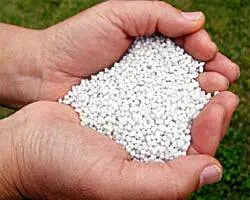 As the New Year approaches, the days grow longer, and gardeners find themselves busier than ever. It’s time to check seed supplies, purchase any missing varieties, and get to work on fertilizing. There’s also the need to inspect stored vegetables and potatoes, winterize basements and cellars before the “Epiphany” frosts hit, repair tools, buy plastic for greenhouses and hotbeds, and even start sowing seeds on paper—a unique agricultural technique for early spring preparations. As the saying goes, there’s no shortage of tasks to tackle!
As the New Year approaches, the days grow longer, and gardeners find themselves busier than ever. It’s time to check seed supplies, purchase any missing varieties, and get to work on fertilizing. There’s also the need to inspect stored vegetables and potatoes, winterize basements and cellars before the “Epiphany” frosts hit, repair tools, buy plastic for greenhouses and hotbeds, and even start sowing seeds on paper—a unique agricultural technique for early spring preparations. As the saying goes, there’s no shortage of tasks to tackle!
Let’s talk about the levels of nitrate nitrogen in vegetables. Does their concentration change during storage, or does it remain constant? According to the Perm Agricultural Institute, the amount of nitrates in cabbage and table beets decreases over the winter. In cabbage, this is likely because the outer leaves, which contain twice as much of this contaminant as the inner, white leaves, are removed.
One effective method for reducing nitrates in vegetables is processing. For instance, the nitrate content in sauerkraut is nearly three times lower than in fresh cabbage. The same goes for pickled tomatoes, and when boiling carrots and table beets, a significant portion of nitrates is leached out. This is also true for potatoes, although it’s best to peel the tubers before cooking.
It’s well-known that one of the main reasons for excessive nitrate accumulation in agricultural products is the application of unverified large doses of nitrogen fertilizers, as well as manure, compost, peat, and green manures. The issue is that plants often can’t absorb all the nitrogen they receive, leading to excess nitrates. According to the Institute of Soil Science and Photosynthesis, this problem is exacerbated by imbalanced nutrition in terms of phosphorus, potassium, and other macro- and micronutrients, as well as factors like water scarcity or excess, poor phytosanitary conditions (such as overcrowding, weed infestation, pest damage, and diseases), sudden temperature fluctuations, insufficient light, and more. For example, the longer the duration of sunlight exposure, the fewer nitrates remain in the plants. A 20% reduction in light can increase nitrate levels in cucumbers by 2.5 times. Providing an additional 12 hours of light to plants before harvest can cut nitrate levels in root vegetables by nearly half and in spinach leaves by a factor of three.
Among the vast array of plants, certain types are more prone to accumulating nitrates. These include celery, cabbage, squash, nightshades, buckwheat, bindweed, amaranth, and others. Among vegetables, this characteristic is found in watercress, spinach, napa cabbage, lettuce, rhubarb, radishes, parsley, and others. Tomatoes, eggplants, and onions tend to accumulate the least nitrates.
There are significant variations in nitrate content among different varieties. Some potato varieties contain ten times more nitrates than others. For example, the April cucumber variety accumulates three times more nitrates than the Moscow greenhouse variety. The Egyptian flat beet has a higher capacity for nitrate accumulation compared to the Bordeaux variety. Nantes carrots accumulate twice as many nitrates as Chantenay carrots. These varietal differences in nitrate content are primarily due to varying rates of absorption from the soil and utilization in the plants’ metabolism, as well as different responses to environmental conditions. Physiological specialization and the morphological characteristics of specific plant organs also play a role. For instance, spinach with savoy cabbage-like leaves has a higher capacity for excessive nitrate accumulation than varieties with smooth, large leaves. Therefore, breeders developing new vegetable varieties must evaluate their potential for nitrate accumulation.
Interestingly, researchers established as far back as the last century that nitrates in plants are distributed unevenly. Modern studies have shown that nitrate levels are minimal in the grains of cereal crops and are generally concentrated in the vegetative organs (leaves, stems) and in the fleshy fruits of vegetables and melons.
In green vegetables, the highest nitrate concentrations are found in the stems and petioles, as these organs transport nitrates to the leaf blades. For example, the nitrate content in spinach leaves is three times lower than in the stems, while in cilantro and dill, it’s five to twelve times lower.
It’s important to remember that agricultural techniques can be used to regulate nitrogen nutrition and nitrate accumulation in crops.

